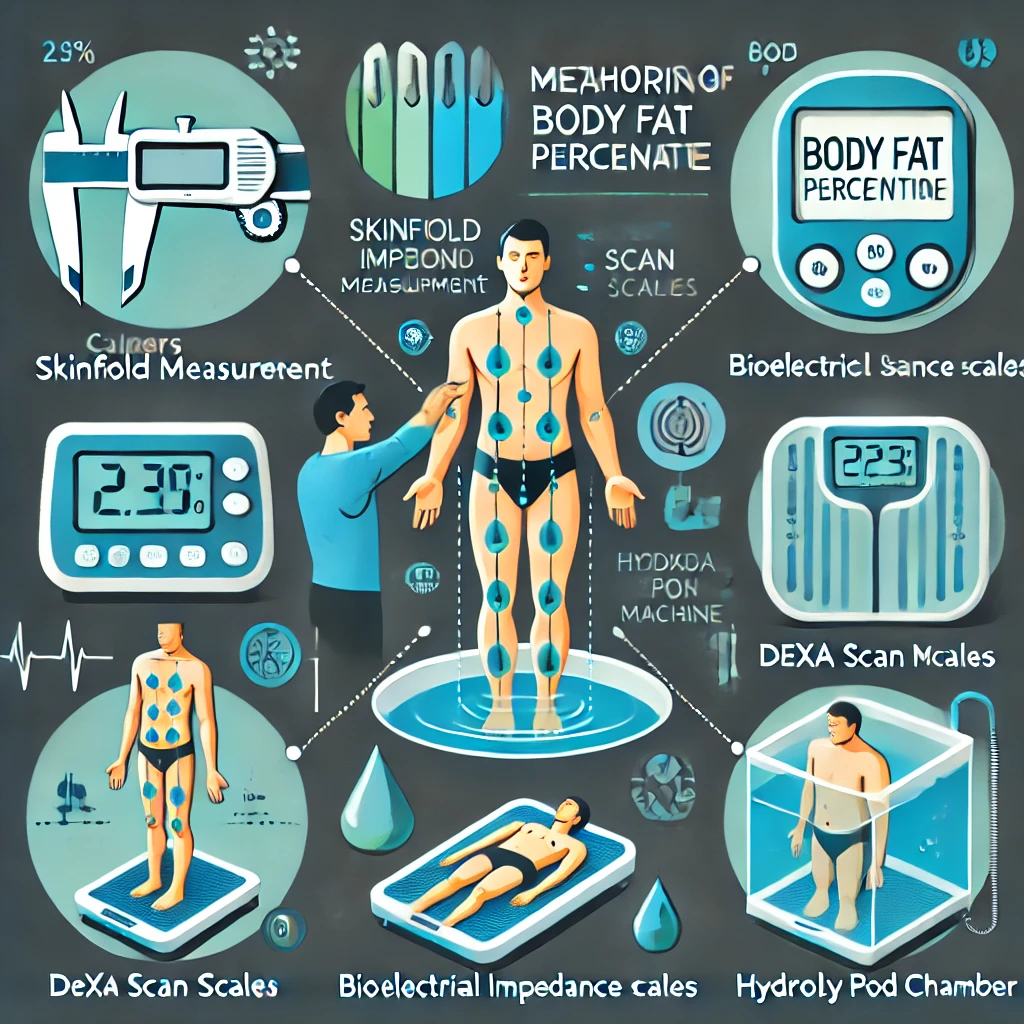Body fat percentage is a crucial indicator of overall health, giving a clearer picture of fitness levels beyond the scale. Whether you’re an athlete fine-tuning your performance or someone starting a fitness journey, understanding your body fat can guide your efforts effectively. However, with many methods available, how do you choose the right one? Here’s a look at popular techniques for measuring body fat and the accuracy of each.

1. Calipers (Skinfold Measurements)
Method: Skinfold measurements are taken using calipers to pinch and measure the thickness of fat at various points on the body. These measurements are then used in an equation to estimate body fat percentage.
Accuracy: Calipers can be relatively accurate when used by trained professionals, but the margin of error increases with the user’s inexperience. Hydration levels, skin elasticity, and the exact location of the pinch can also affect results. Accuracy tends to range within 3-4%, making it a more budget-friendly but slightly less precise option.
2. Bioelectrical Impedance Analysis (BIA)
Method: This method uses a small electrical current that passes through the body to estimate body composition, including fat, muscle, and water. The resistance to the current helps determine body fat percentage.
Accuracy: BIA devices, commonly found in smart scales and handheld devices, are convenient but can vary in accuracy due to factors like hydration, food intake, and even skin temperature. Their accuracy is often within 3-5%, though higher-end devices used in medical settings may provide better results.
3. DEXA Scan (Dual-Energy X-ray Absorptiometry)
Method: A DEXA scan uses X-ray technology to provide a comprehensive breakdown of body composition, including bone density, muscle mass, and fat distribution.
Accuracy: Widely regarded as one of the most accurate methods, the DEXA scan can measure body fat with an error margin of around 1-2%. It’s considered a gold standard in body composition analysis, though it is more costly and typically requires visiting a specialized facility.
4. Hydrostatic Weighing
Method: This technique measures body fat based on water displacement. The individual is submerged in water, and their body density is calculated to estimate fat mass versus lean tissue.
Accuracy: Hydrostatic weighing is also highly accurate, with a margin of error of about 1-3%. However, the test requires special equipment, and some may find the process uncomfortable due to the full-body submersion.
5. Bod Pod (Air Displacement Plethysmography)
Method: Similar to hydrostatic weighing but using air instead of water, the Bod Pod calculates body fat based on how much air your body displaces in an enclosed chamber.
Accuracy: The Bod Pod provides a high level of accuracy, typically within 1-2%. Like hydrostatic weighing, it’s usually available only at specialized fitness centers or clinics.
6. 3D Body Scanners
Method: A 3D body scanner captures a full image of your body and uses this data to estimate fat distribution and overall body fat percentage.
Accuracy: 3D body scans are becoming more popular due to their convenience and the level of detail they offer. Accuracy varies depending on the specific device used but is typically within a 2-4% error range.
Which Method is Best for You?
Choosing the right method depends on your goals, budget, and access to equipment. If you’re looking for general trends in your body composition, a BIA scale or calipers can give you a rough estimate at home. For more precise measurements, especially if you’re working toward specific health or fitness targets, a DEXA scan or Bod Pod might be the better choice.
Conclusion
No method is perfect, but understanding the pros and cons of each can help you make an informed decision. Regularly tracking your body fat percentage, especially through more accurate methods like DEXA scans, can give you valuable insights into your fitness progress and overall health. Keep in mind that body fat percentage is just one metric in assessing health, so it’s essential to consider other factors like muscle mass, diet, and exercise habits for a holistic view.